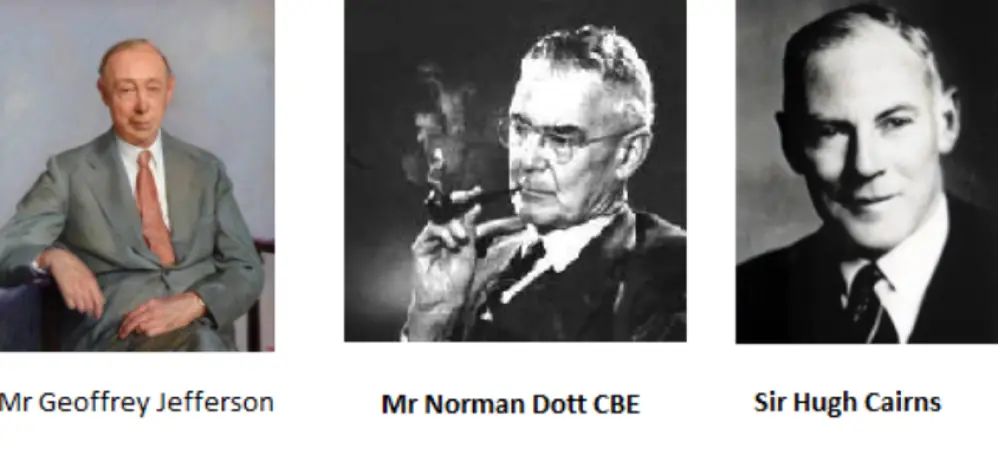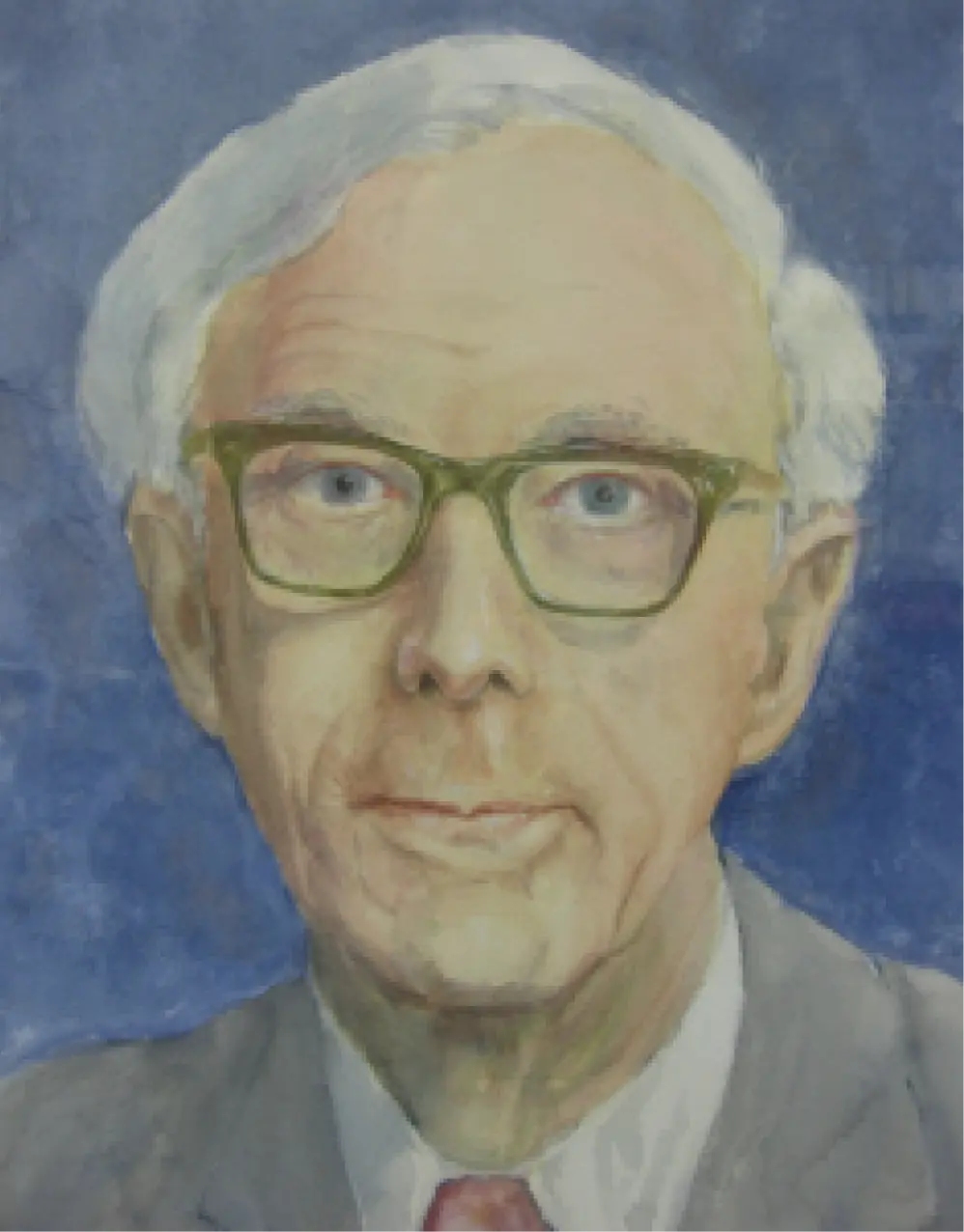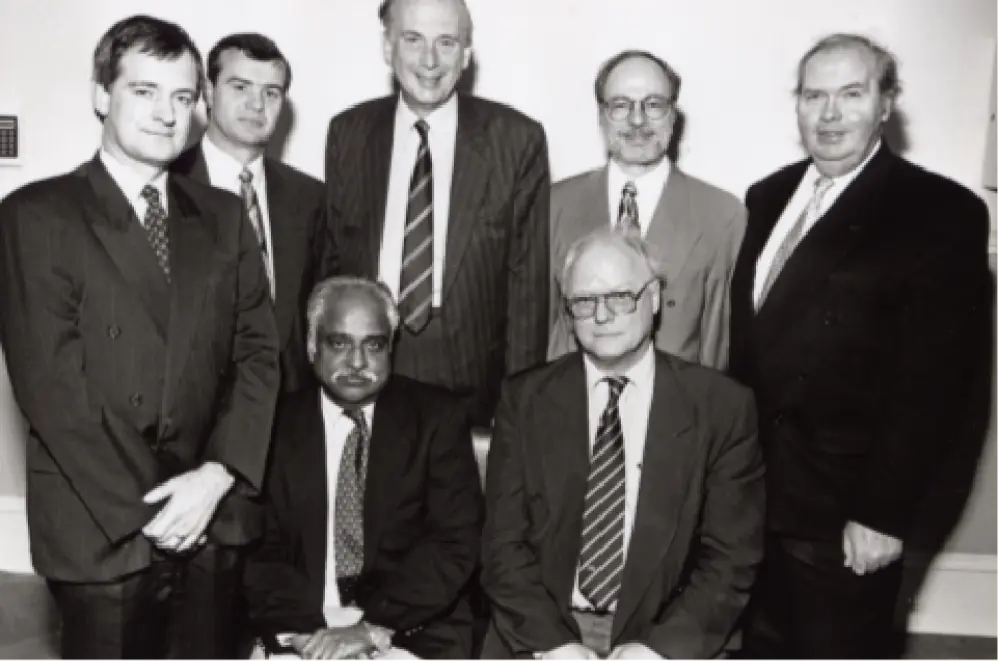History of NACCS
(by Dr Peter Farling)
The Neuroanaesthesia Society was the first sub-specialist group of anaesthetists to be formed and in September 2025 it will have been in existence for 60 years. The Society was delighted that Dr. Jean Horton, one of the founder members, and many past-Presidents, including Dr. Stuart Ingram, attended the recent dinner in Manchester (May 2015).
In 2006 Dr Horton gave me the original minute book of the Neurosurgical Anaesthetists Travelling Club. I then obtained the minute book that had been maintained from 1981 by Dr Jim Jenkinson, the last Honorary Secretary of the Travelling Club. Information from these sources, and from Dr Horton’s article,1 has formed the basis of this short paper.
A number of eminent British and Irish neurosurgeons trained in North America during the 1920s. These included Mr Geoffrey Jefferson, Mr Norman Dott CBE and Sir Hugh Cairns, all of whom trained with Harvey Cushing in Boston. They returned to Manchester, Edinburgh and London respectively and brought with them the team model employed by Harvey Cushing (1869–1939).
Cushing had been profoundly influenced by his experience when, as a medical student, he was called from the ‘benches’ to administer ether. The patient promptly vomited, aspirated and died. His seniors told him ‘Don’t worry. This happens all the time! Cushing was one of the first clinicians to record the patient’s vital signs throughout surgical procedures. He appreciated the need for care when administering anaesthesia and was quoted as saying ‘regardless of the drug to be employed it is essential that it be employed by an expert – preferably by one who makes this his speciality’. On returning to London Sir Hugh Cairns adopted Cushing’s approach and persuaded the Rockefeller Foundation to provide funding for the first specialist neuro anaesthetists, Dr Olive Jones. She followed Cairns to Oxford when he moved there in 1938.
The National Health Service was formed in 1948 and anaesthetists obtained consultant status. By the 1960s neurosurgical units existed throughout Great Britain and Ireland and a number of anaesthetists specialised in anaesthesia for neurosurgery. However, the meetings and conferences of that time did not fulfil their academic needs. For example, the 131st Annual Meeting of the British Medical Association was held in Oxford in 1963. There was a section for anaesthetics and within that section, Professor Cecil Gray chaired a symposium on anaesthesia for neurosurgery. The speakers included Dr Norman McCleery from Sheffield, Dr Andrew Hunter from Manchester and Dr Jan Hewer from London.4 Dr Allan Brown from Edinburgh, who was the Honorary Secretary of the Scottish Society of Anaesthetists, began discussion groups for specialist anaesthetists. Neuroanaesthetists from Edinburgh, Glasgow, Aberdeen and Dundee met twice a year. In 1964 this Scottish group met in Newcastle and Dr Andrew Hunter,
Dr Hunter was in the Chair and papers were presented as follows:
- Dr J Hewer: Hypothermia during neurosurgical anaesthesia
- Dr V Campkin: Moderate hypothermia and circulatory arrest for operations on intracranial aneurysms
- Dr N McCleery: Some aspects of anaesthesia for cerebral aneurysm
- Dr D Potter: A comment on the use of ECG during Pudens shunts
- Dr A Brown: The treatment of status epilepticus
- Dr R Keen: Variations in venous pressure during controlled respiration
The Neuroanaesthesia Society was the first sub-specialist group of anaesthetists to be formed and in September 2025 it will have been in existence for 60 years.




Recent Presidents
2021 – 2023
2019 – 2021
2017 – 2019
2015 – 2017
2013 – 2015
2011 – 2013
Sally Wilson
Roger Lightfoot
Judith Dinsmore
John Andrzejowski
Ian Tweedie
Plat Razis
Tribute to Prof G McDowall
Professor Gordon McDowall (1932-1984)
Gordon McDowall was Professor of Anaesthesia at the University of Leeds from October 1969 until his untimely death at Christmas 1984. He was a man of great integrity and, despite his great intellect, humility. The attendance at his funeral was a testament to the esteem in which he was held. This was further reflected in the number of contributions to the memorial fund set up by Richard Ellis in the University Department of Anaesthesia in Leeds after the funeral. The interest from this fund was offered to the Neuroanaesthetists’ Travelling Club, the forerunner of the Neuroanaesthesia Society, to fund a lecture at its annual meeting every second year on a subject relevant to neuroanaesthesia and/or neurointensive care. The first lecture was given by Professor John Michenfelder at the Leeds meeting in 1987. Professor McDowall had a strong affinity with the Neuroanaesthetists’ Travelling Club. He served on the informal committee that ran the NATC and regularly attended the annual meetings to which he was a much-respected contributor. It is gratifying that the NAS is committed to continuing the McDowall lectures despite the falling proportion of the lecture costs that can now be covered by income from the fund.
Gordon McDowall was an undergraduate at the University of Edinburgh and, after basic anaesthetic training there, moved to the opposition in Glasgow where he began a glittering academic career in the neurosciences. His early work with Murray Harper and Bryan Jennett related to the effects of volatile anaesthetics on CBF and ICP in animals and ICP in humans. This work was written up in his MD thesis as well as being published in peer-reviewed journals.
He did his clinical work at Leeds General Infirmary and was a prolific and very gifted medical writer. He continued his clinical and animal research work producing many key publications and became recognized internationally as one of the world leaders in research in neuroanaesthesia and neurocritical care. He produced a large number of publications. His animal work in Leeds included ICP gradients with Halothane, comparison of extradural (Leeds bolt) and subarachnoid measurement of ICP and the effect of anaesthetic agents on ICP, CPP, CBF & CMR. He also did a considerable amount of animal work on induced hypotension and the Cushing response. His clinical research work in Leeds included the effects of various anaesthetic and hypotensive agents on ICP and CPP. He was a proponent of ventilation in severe head injuries in the “To ventilate or not to ventilate?” debate in the 1970s and had a major influence in establishing the need to control ventilation in head injuries in the UK.
In addition to the research and clinical work, Gordon McDowall was a member of Council of the Faculty of Anaesthetists at the Royal College of Surgeons, a member of the Editorial Board of the BJA and a Primary Examiner.
Professor Gordon McDowall was the leader of research in neuroanaesthesia and neurointensive care in the UK for over a decade before his untimely death in 1984. The McDowall Lecture is a fitting tribute to his work in our field.
Dr Ed Moss, NASGBI Past-president, presented a tribute to Prof. McDowall at the NASGBI Annual Scientific Meeting, May 2009, Liverpool UK.